Employee profiles are a crucial tool for any workplace because they are designed to solve an imperative question: how do I make my employees motivated and my workplace thriving?
There’s a huge difference between an employee who shows up for a salary versus an employee who shows up with a purpose. For employees to work meaningfully, they need to feel connected to their coworkers and feel supported by their employer. That emotional connection is what will compel employees to stick around, believe in their company’s mission, and put their best foot forward any chance they can.
Employee profiles are a powerful tool to enhance connection and engagement because they give a human touch in a digital world. Employee profiles outline who a person is—both in a professional and a personal perspective—and showcases what their role is in an organization. There’s also productivity perks because coworkers can easily find the right person with the right expertise to resolve issues.
There’s different employee profile and directory options out there, but one of the best and most comprehensive solutions is social intranet software. Intranets provide your people with the knowledge, people, and communications they need to be successful. Accompanying tools, like an org chart and recognition, are also part of the package—giving your workforce a digital hub to connect and engage with each other and your organization at large.
By providing your people with features designed for human connection, you create a culture that puts people first. Employee profiles tell the story of each and every member of an organization and as your organization grows and evolves, it becomes increasingly imperative for employee skills to be easily accessible.
The 3 big benefits of having employee profiles.
Understanding why employee profiles are important gives you the skills and vision to make the most out of them. It also puts you in the best position to implement an employee-centric workplace and strengthen overall teamwork. Here are a few points to keep in mind about how your business can gain traction by embracing employee profiles:
1. Employee profiles help bring together remote employees.
When people work remotely, creating actual bonds in an environment where people are comfortable reaching out to each other becomes challenging. In fact, 70% of employees say friendships in work are one of the most important elements. Impersonal forms of communication, like email or rigid Slack messages, will not do the trick. By leaning on employee profiles, colleagues become actual people and can showcase their personalities in a way that normal communication cannot. This is extremely important for businesses with remote employees, because profiles match a face to a name.
2. They help employees to network (inside and outside your business).
Networking is a huge employee engagement idea that can be easily accomplished through employee profiles—just look at LinkedIn. With LinkedIn, users can network through professional profiles to find new opportunities or expand their connections. Similar to LinkedIn’s model, employee profiles will increase engagement between coworkers and also empower colleagues to engage with internal networking and career development opportunities. Especially for people who don’t attend many in-person events or work in a large company, a robust employee profile is a quick and easy way to show off accomplishments, professional interests, and open the door to new opportunities.
3. Employee profiles support talent scouting.
When you have a lot of employees or don’t interact with certain departments often, it’s easy to forget who’s who and what coworkers actually do in their teams. Since employee profiles can be used to house information about professional skills and backgrounds, they serve as excellent tools for internal hiring or finding the right person for a special project. In the end, a task that could take days can be completed in minutes, or a hiring process that could take months can happen in a few days—as long as every member profile is accurately filled out.
What’s in an employee profile?
Let’s dive into employee profiles. In Axero, features are centered around the end user, which makes employee profiles, people directories, and org charts imperative components. When thoughtfully executed, employee profiles in Axero can go beyond the standard experience and truly connect and engage team members.
What goes into effective profiles? Here’s a few essential features and intranet ideas that you can take advantage of to take your workplace to the next level:
Personal, contact, work, and any other type of information.
Every employee profile should contain the obvious: first and last name, department, location, and contact information. But the ability to add custom fields and questions that match your brand will take your entire directory to the next level. Include professional aspects, such as projects people have worked on and what’s going on in their world currently. But also get a little more personal with favorite quotes, books, movies, and music. Your people are your greatest asset, which makes employee profiles a fundamental knowledge base for your organization and a place to elevate the overall employee experience.
Employee photos / avatars.
If your goal is to make your workplace more people-focused, putting a face to a name is a crucial element for your entire directory. Offering complimentary headshots at company-wide events are a great opportunity to add a uniform look and a feel to profiles, while elevating your brand and letting each individual add their own personal flair. Once uploaded, users can flesh out the rest of their profile with their name, bio, location and interests.
Activity streams.
Because everyone in an organization is working towards a common goal, having visibility into what each member is working on adds a stronger sense of togetherness and supports online collaboration. In Axero, for example, employee profiles display a person’s activity stream, including authored content, comments, tasks, and documents they’ve uploaded. By viewing a coworkers’ profile, you can easily gain an understanding of who they are and what they do—both currently and throughout their career at your organization. If you’re working on a project and need to find relevant updates, looking at a team member’s activity stream is another way to quickly find what you need.
Connecting / following / friending.
When users browse each others profiles, the ability to connect and stay looped in with each other will strengthen work relationships. In Axero, users can connect with one another by adding team members to their list of “friends” so they can stay up to date about what everyone is up to. This builds a stronger sense of community and also helps your internal communication strategy by aligning relevant teams to each other. Connections can also be added, managed and removed, ensuring complete control over one’s profile.
A listing of content each person published.
Activity streams give you a bird’s-eye view of every activity a person has participated in. But you can also use employee profiles to get granular with specific content and documents a team member has contributed to (an excellent example of how profiles also serve as knowledge management tools). When you browse a user’s profile in Axero, you gain access to a list of personal contributions, like blogs and wikis. All contributions are presented in a highly-organized manner, so you can seamlessly find relevant files, fast. As you might expect, sharing these links internally and externally is a breeze.
Photos and videos.
Central to any social community is the ability to upload great content, which is where photos and videos have their shining moment. Members can use their profile page to house shareable photo albums and videos—all easily browsable on a profile through clearly defined tabs. With Axero, there’s no need to sift through mountains of information to find content, and this extends to photos and videos as much as it does text.
Awards and badges.
Employee profiles are also a place for camaraderie. In Axero, profiles will showcase awards, badges, and recognition. This is an effective way to celebrate employee’s achievements and also inspire others to get on board with the behavior you want to encourage. Designed specifically for people, merging recognition with profiles is a simple way to improve employee engagement, both on your intranet and throughout your organization.
How to get employees to fill out their profiles.
There’s no doubt that employee profiles are extremely effective resources for knowledge sharing and bringing people together. But as with everything, if your users don’t adopt the technology, no one will use it. Fortunately, there are many strategies you can implement to encourage employees to fill out their profiles and get continual value in their day to day. Here’s a few tips to get started:
Make sure everyone knows “why” … discuss the benefits.
No one is going to take the time to fill out their employee profile if they don’t understand why. Better yet, they won’t care unless they have personal gain. Instead of explaining why it’s important for your company to have a robust employee directory, focus on why it’s important for each person. Your employees will care that employee profiles will expedite problem solving, finding answers, locating projects, and following specific contributions. Most will also care that they can connect and engage with each other—especially remote teams. Frame the value around your people so they understand the personal benefits.
Take the lead, set an example, and fill yours out.
One of the best ways to encourage a large group of people to do something is if you lead by example. The same goes for employee profiles. Give your profile the same effort you want others to put in. As an added bonus, you’ll have a real-life example to show your entire team when you roll out your new employee directory initiative. This brings your vision to life, motivates others to do the same, and gives your employees a visual of how they can benefit from staff profiles.
Consider holding a contest, make it a competition.
Competition and rewards are powerful persuasion methods. Consider holding contents to entice more people to complete their employee profiles quicker. In terms of how you want to go about competitions, the world is your oyster. But here’s a couple ideas:
-
- Break up your departments into teams. The first department to complete all of their profiles receives gift cards.
- The first 15 employees who finish their profiles get a half day on any given Friday (when planned responsibly, of course).
- Hold a survey for the most creative profile. The winner gets to add a custom icon of their choice to the company emoji library.
The beauty of contests is they’re effective, fun, and are team building exercises. What better way to get your people on board with a big initiative?
If all else fails, make it a requirement.
As any manager knows, most of the time, if not all the time, you need to set deadlines. It’s the best way to add urgency and give people expectations. If you’ve tried our tips and you’re still having difficulties getting traction, cut to the chase and make employee profiles a requirement. By making an item a requirement, you send the message that it is a priority—and everyone will feel pressure to complete the task.
In conclusion.
Axero was built with the intention of connecting people to the information they need and the people they work with. Employee profiles can be a game changer for how people interact with knowledge, colleagues, and their company culture. But beyond that, people make up your organization so they deserve a space that celebrates their contributions and presence. With a robust employee directory, you have a huge opportunity to not only optimize productivity, but also build a workplace where people matter first.


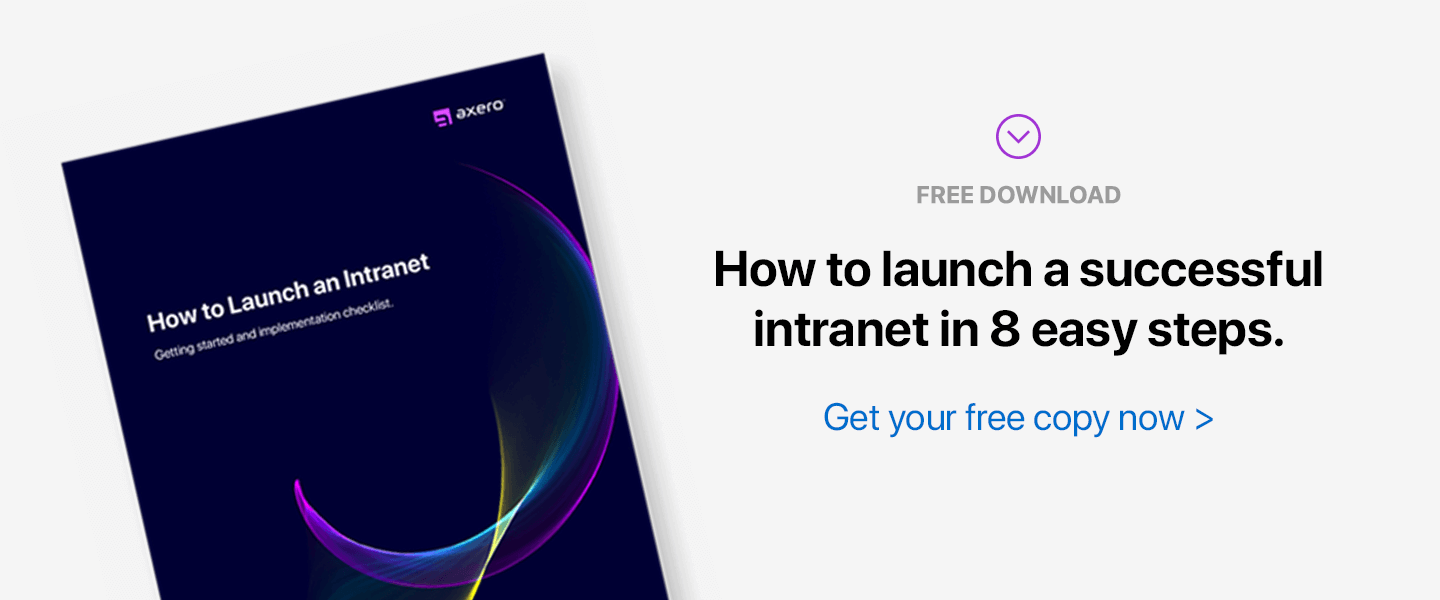
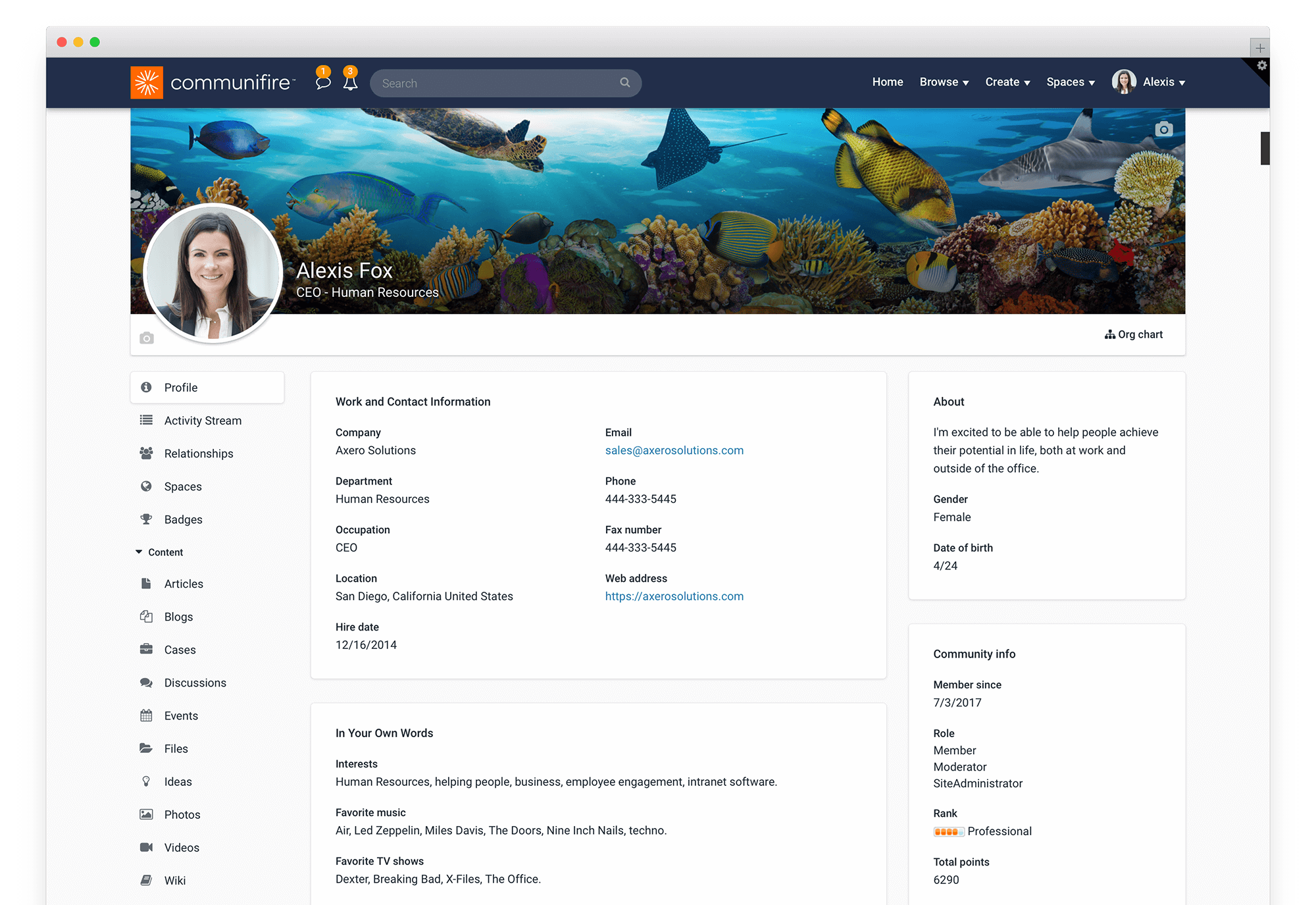
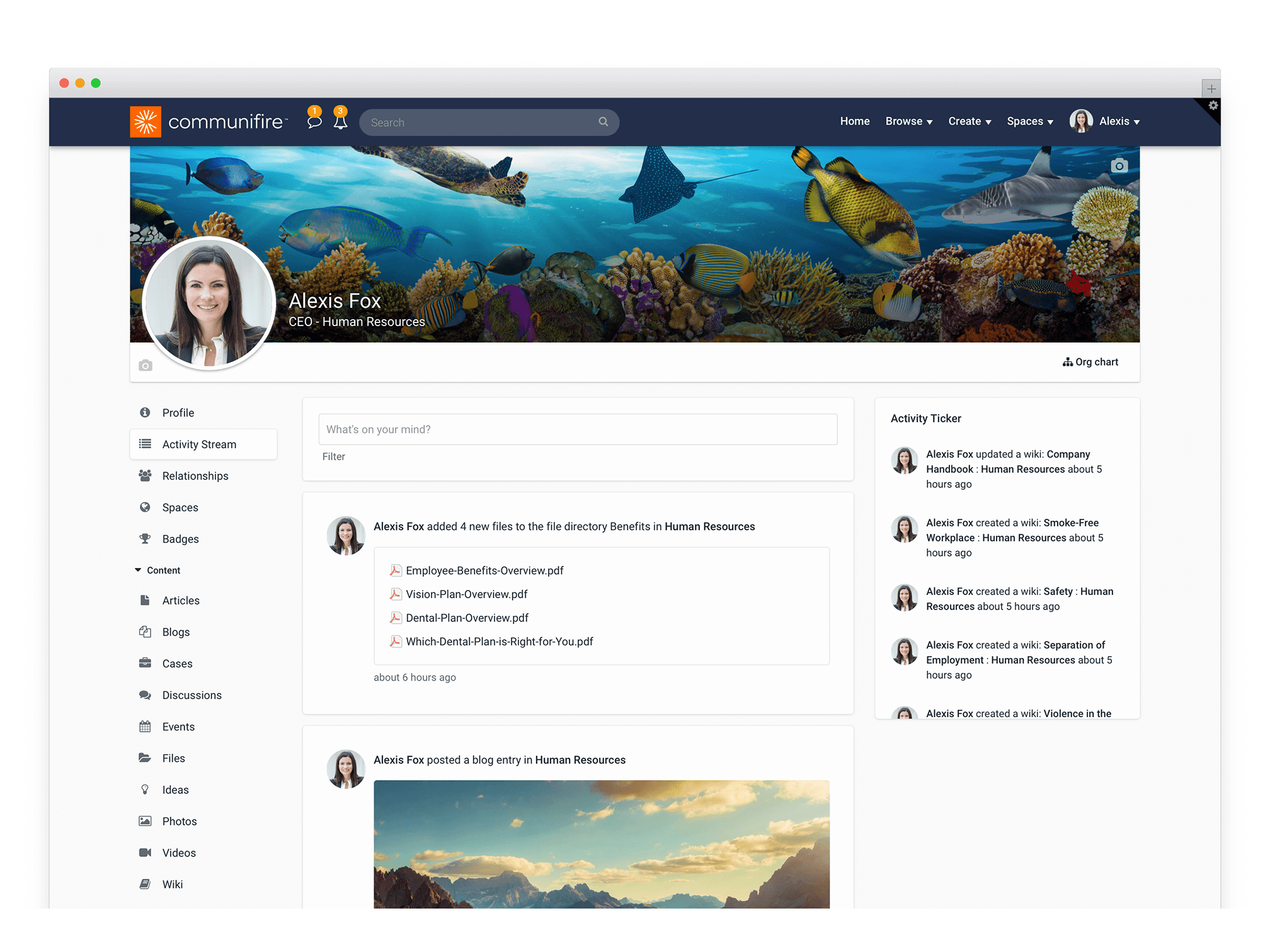

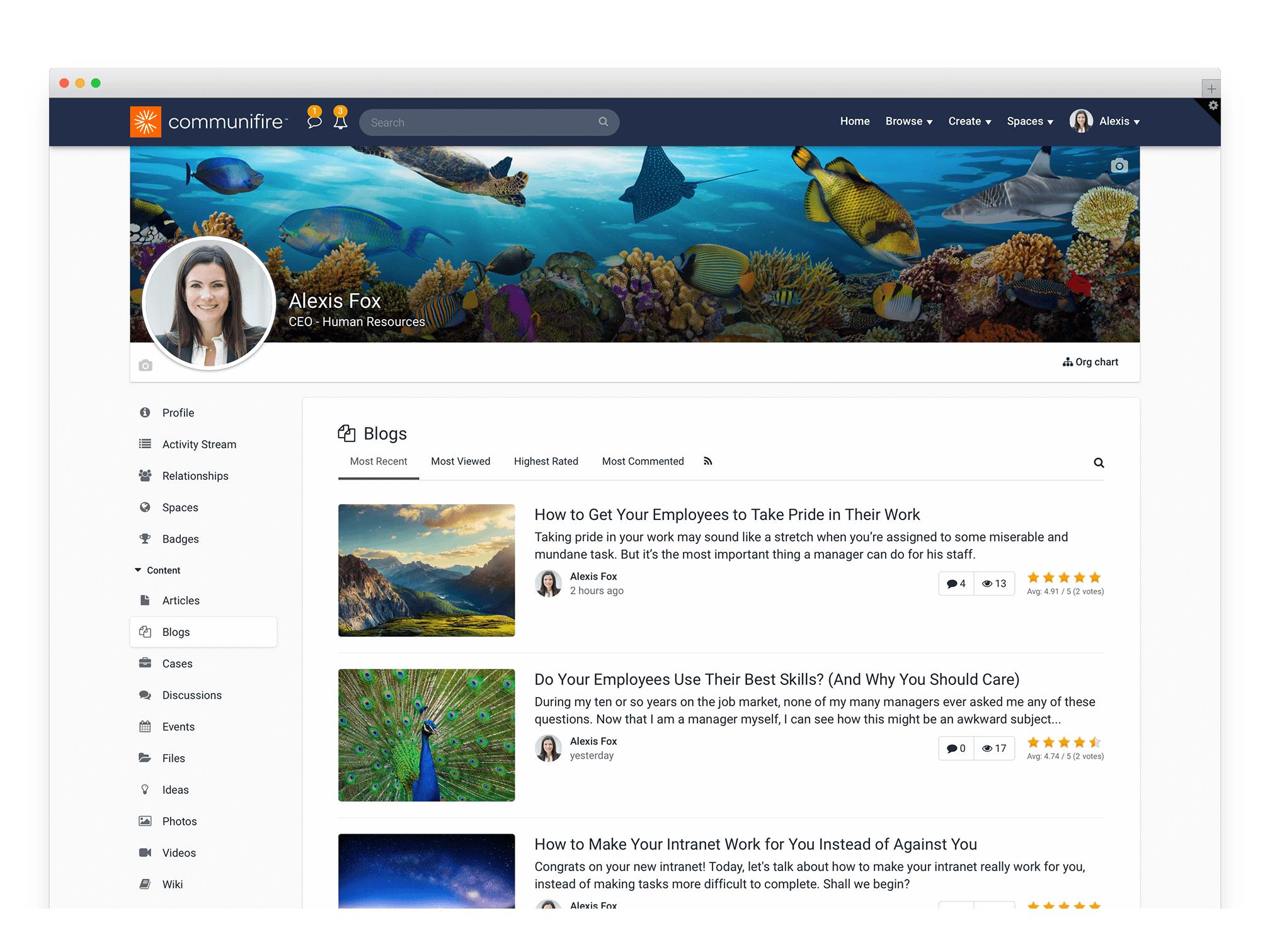
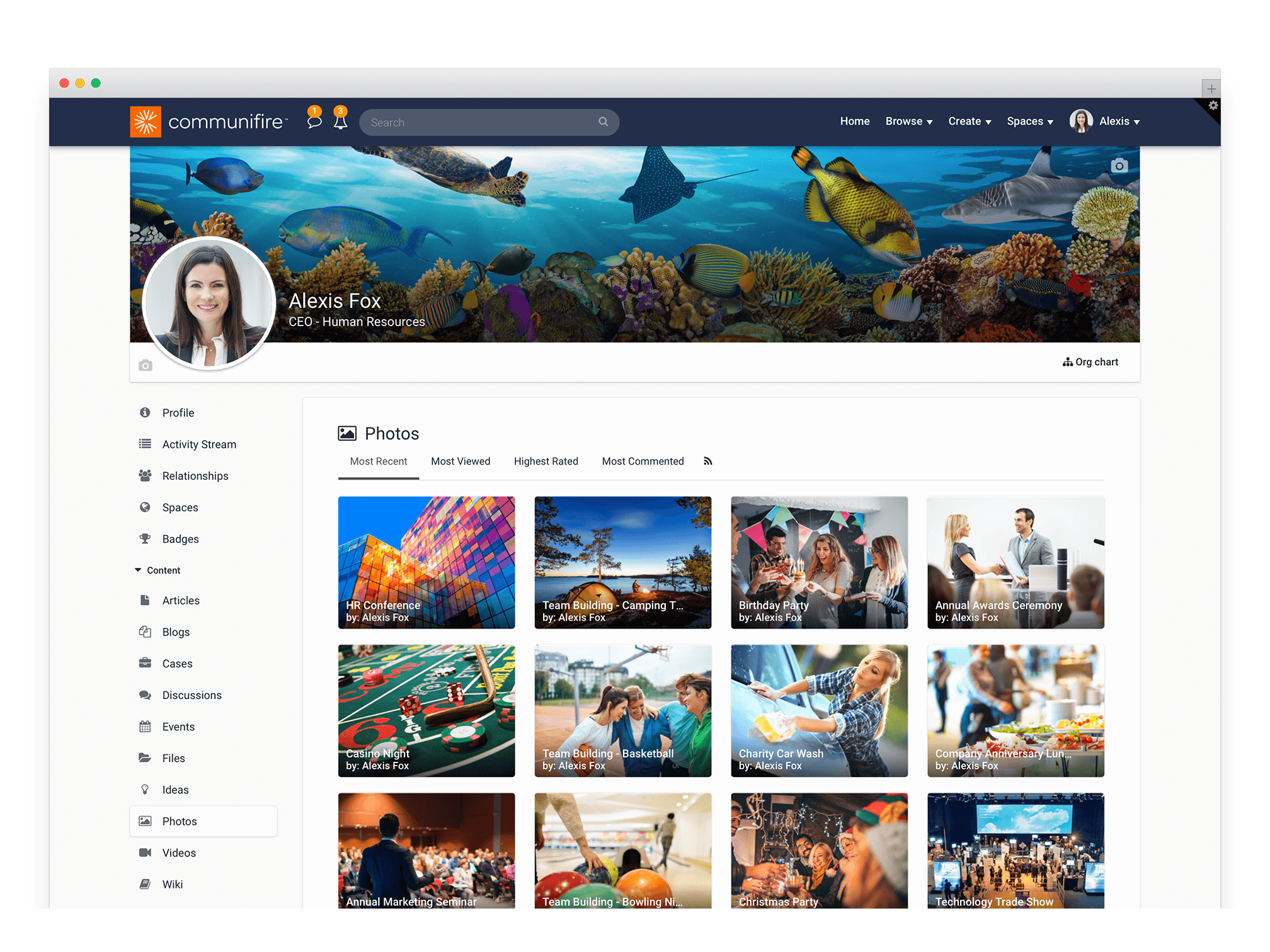
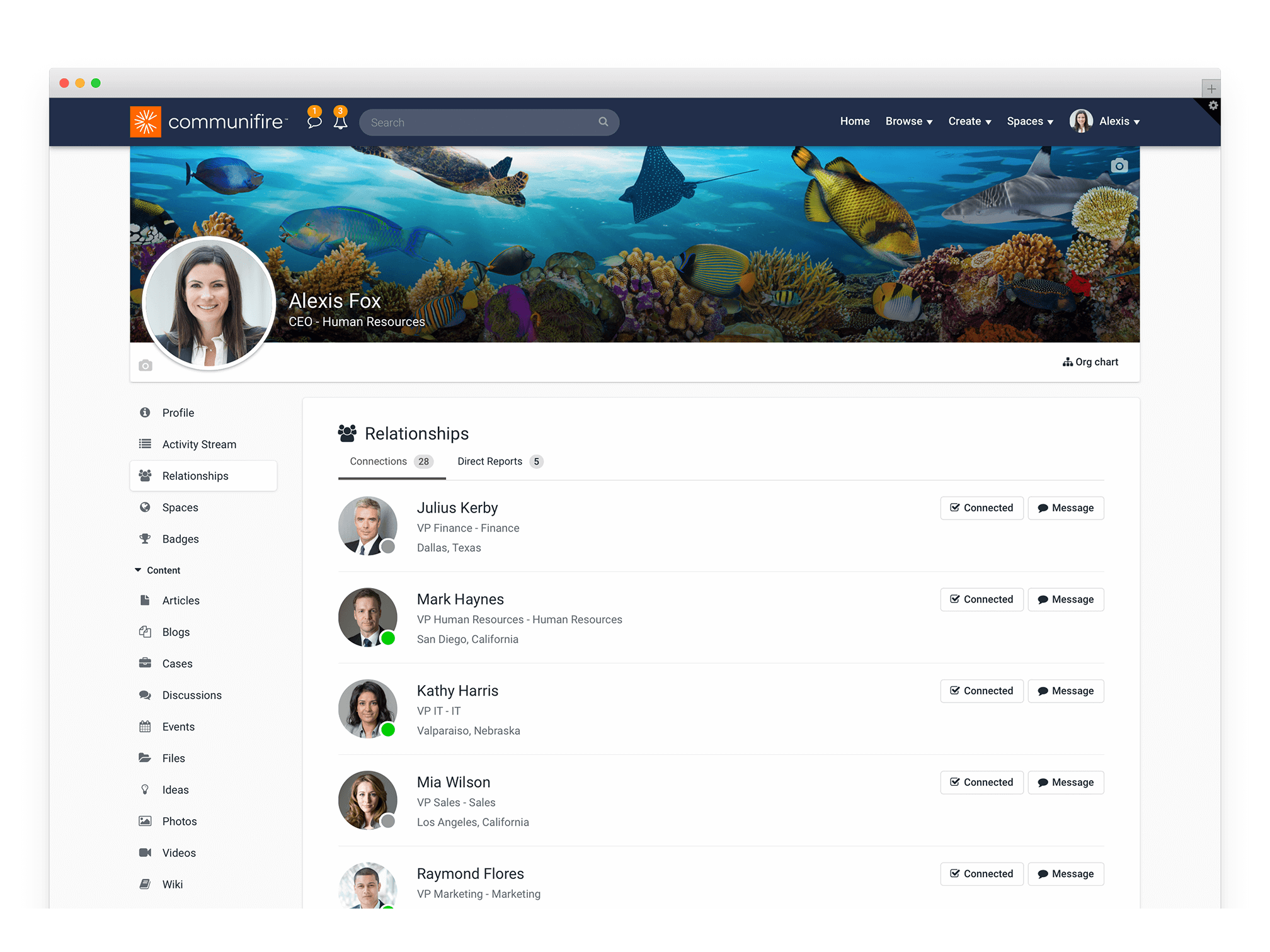
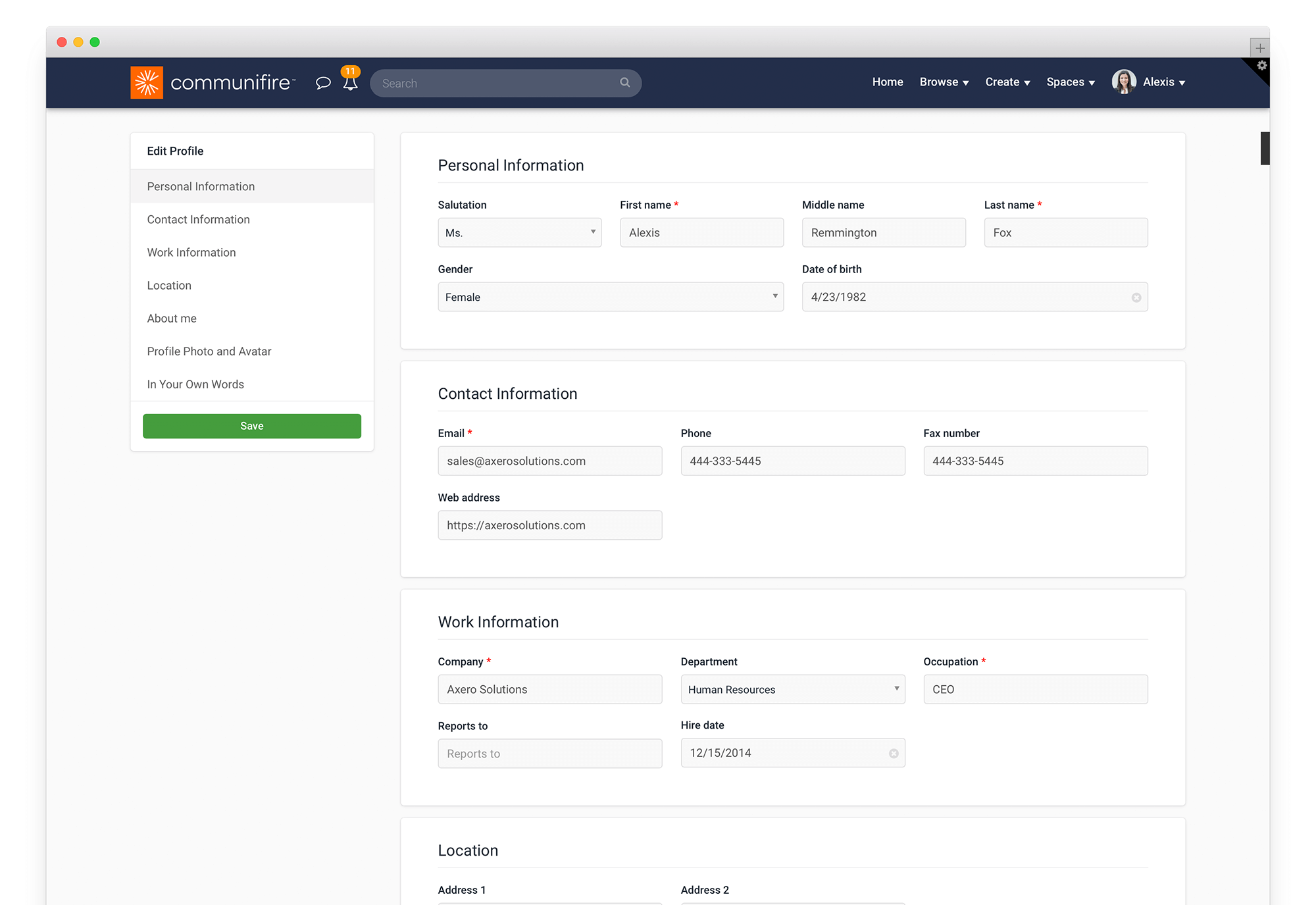
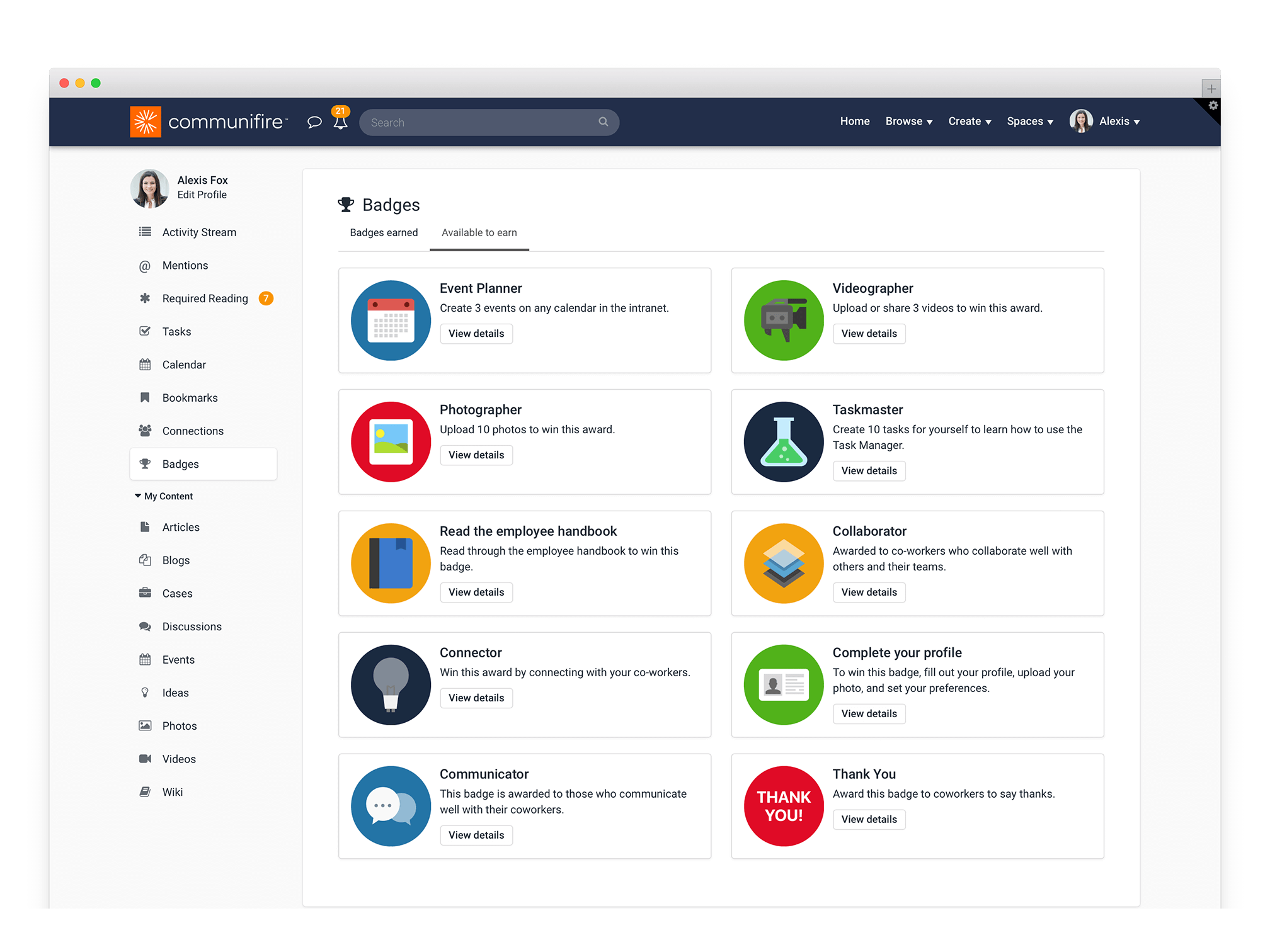
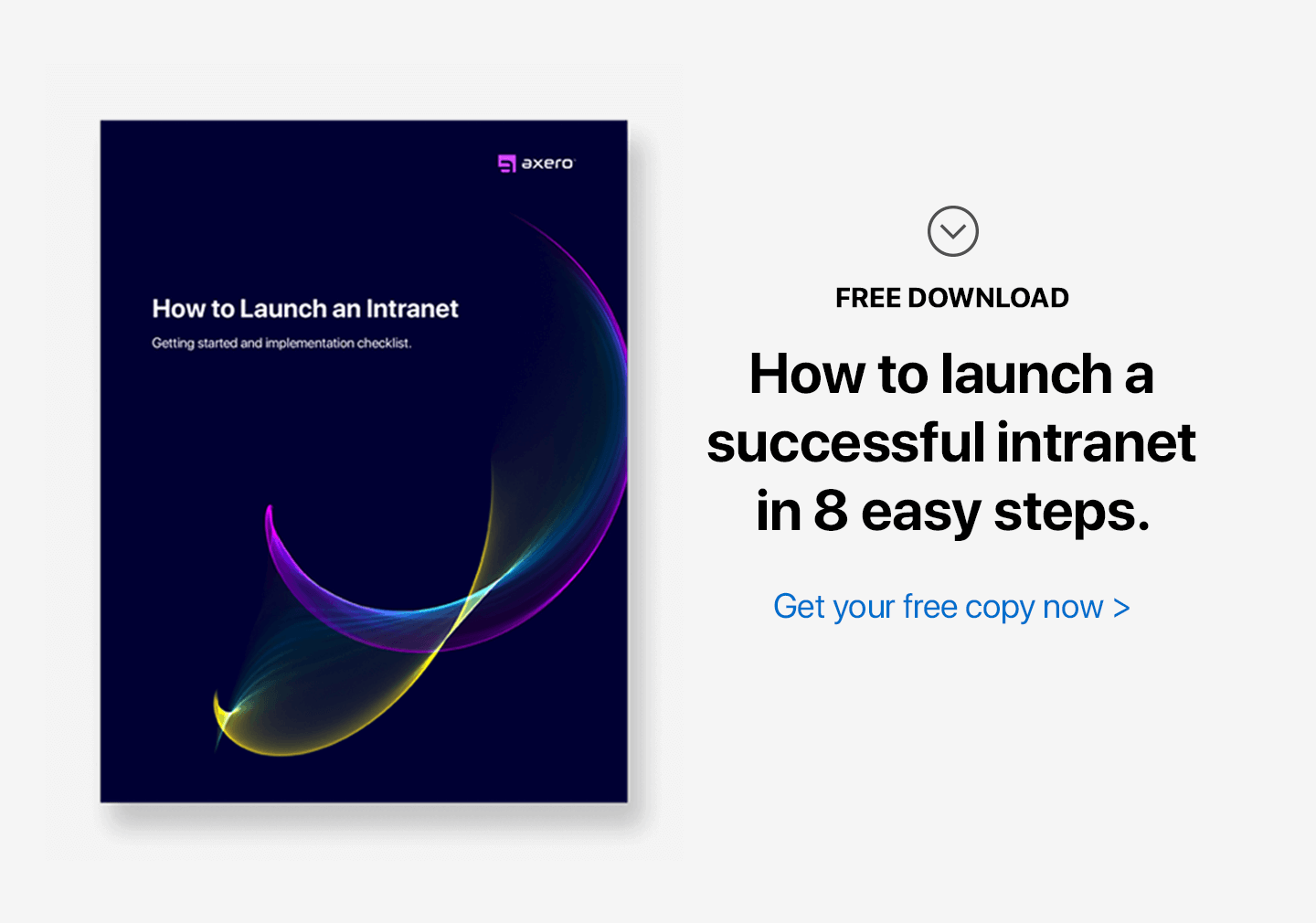
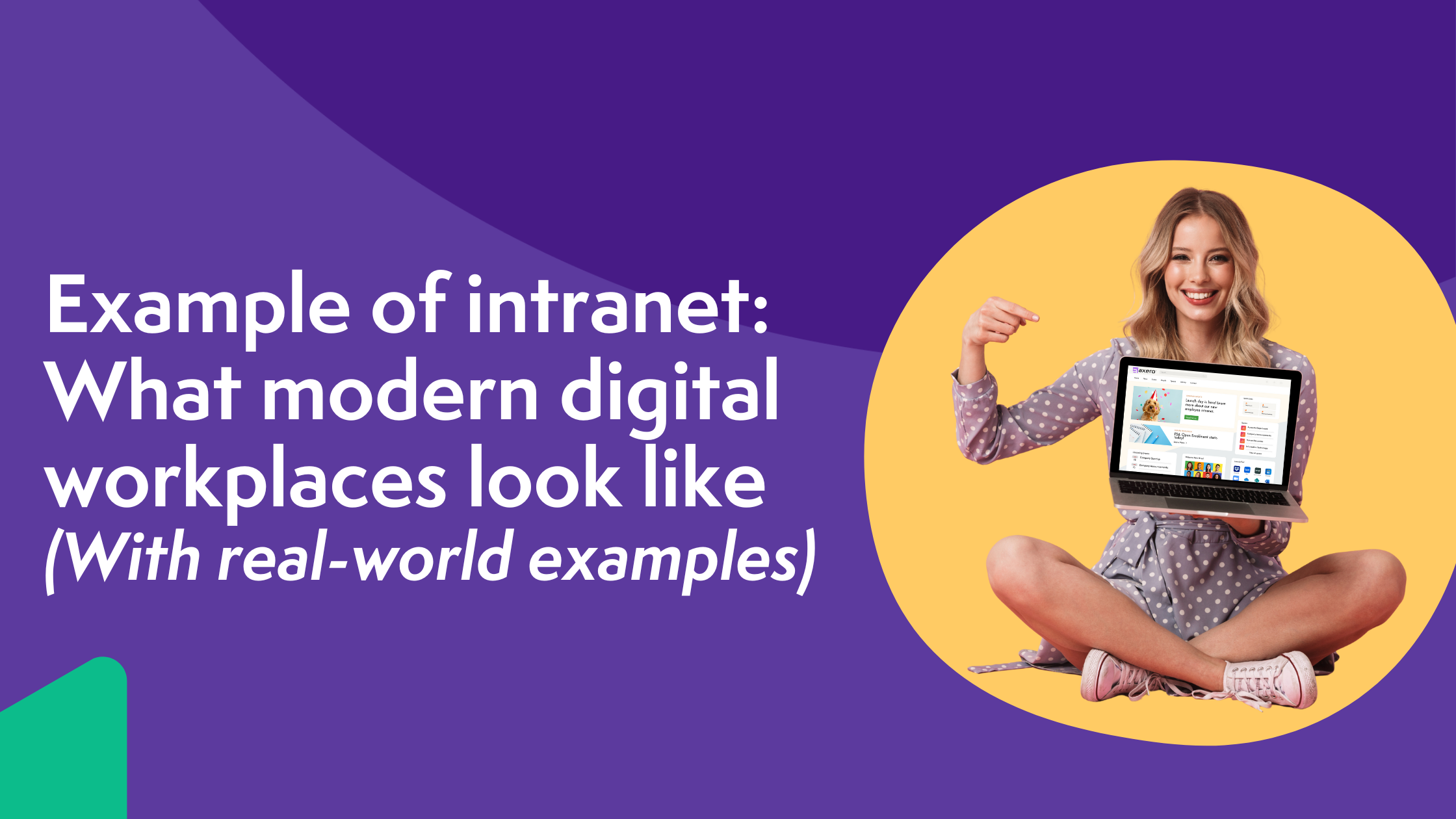
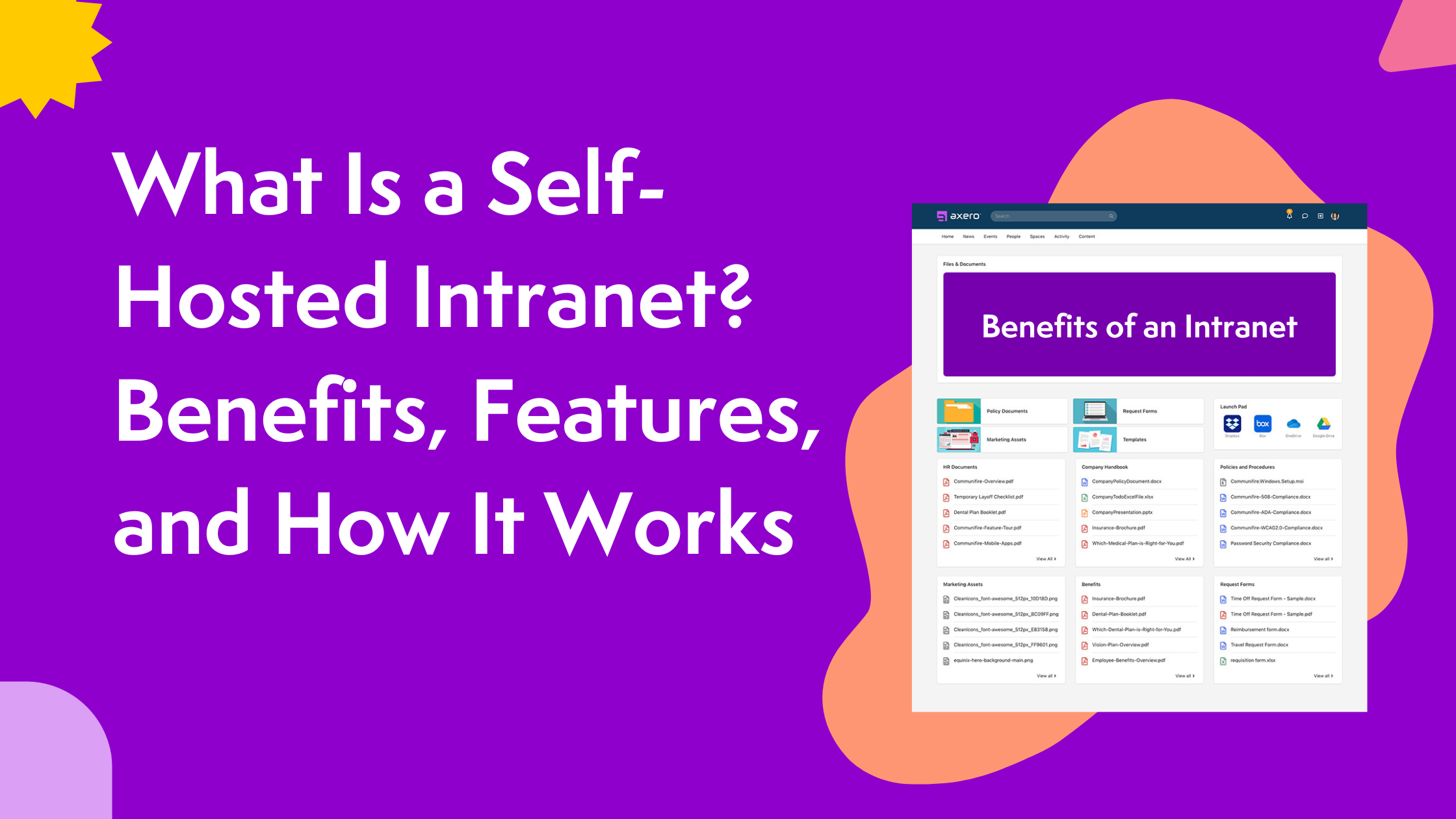








 info@axerosolutions.com
info@axerosolutions.com 1-855-AXERO-55
1-855-AXERO-55


